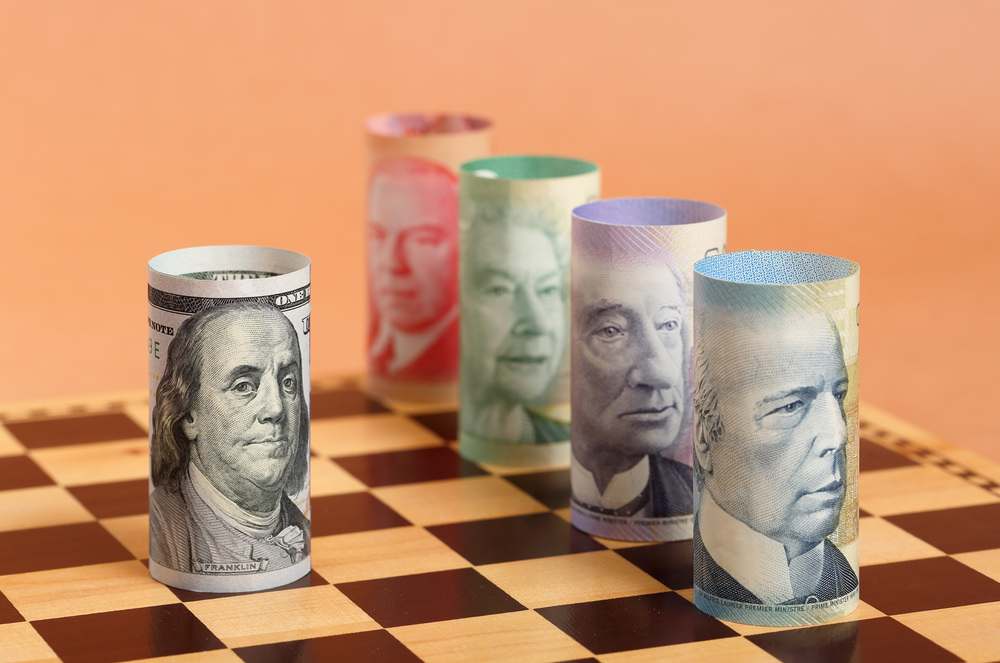The article “Planning A Canadian Retirement On A U.S. Income” was originally published on MoneySense on December 15, 2015.
What is the best way for Amy to convert her U.S. salary into Canadian dollars as she approaches retirement?
Q: I have been working in the U.S. for almost two years now. Over the course of the last two years, the U.S. dollar has gotten substantially stronger. My salary is paid in U.S. dollars, but 80% of my assets are Canadian. I have a Florida house, a Canadian-based U.S. dollar non-registered investment account and a U.S.-based 401K. My husband and three kids continue to live in Canada, where we will retire in approximately two years.
My question is: Should I be aggressively converting large sums of my U.S. pay into Canadian dollars to take advantage of the strong U.S. dollar?
—Amy M
A: First off, Amy, congratulations on your big raise! You took a job in the U.S. two years ago, which was no doubt a concession that must have been worth it at the time, but you have got a 25% pay raise in Canadian dollars during that 2-year period as well. Currency conversion has definitely worked in your favour—so far.
In the same vein, that swing could go the other way and I can understand why you are wondering about the timing decision of converting back to Canadian dollars. Generally, I think that trying to time markets is a tough strategy and one that studies say even the experts generally cannot do well.
However, in an extreme case like yours, Amy, it is not unreasonable to think about taking some money off the table. While it may be hard to profit continuously from currency market timing, in the case of a one-time conversion, a 25% currency gain in two years between two major currencies is not common and justifies at least some consideration about realizing those gains.
So then the question becomes: how much to convert?
From a strictly investment perspective, I would say that having 20% of your assets in U.S. dollars is not unreasonably high, Amy. In fact, 38% of the Canada Pension Plan is invested in the U.S. and 76% of total CPP assets are invested outside of Canada. The CPP generally does not use currency hedging, simply tolerating the fact that sometimes currency gains and losses will result.
On that basis, I would say that 20% is not high in the first place.
Furthermore, you own a home in Florida, so you have U.S. dollar expenses for that property in addition to the expenses that you are incurring working in the U.S. As retirement approaches, you are likely to spend time in Florida, spending at least a portion of your retirement expenses in U.S. dollars. I think that this further supports a generous allocation to U.S. dollars and perhaps at least in line with the proportion of your annual budget that will be spent in U.S versus Canadian dollars. If you plan on spending four months each year in Florida, for example, this might suggest having as much as one-third of your investments in U.S. dollars.
To the extent that you own U.S. investments, it may be advisable to own them in your registered accounts – like your 401K and RRSP. Canadian dividends receive favourable tax treatment in a non-registered account that U.S. dividends do not receive. So you might benefit from doing a little bit of re-jigging of where you are holding and building your U.S. investments, given that it sounds like you are doing so in your non-registered, taxable account.
At first glance, I can understand why you are wondering about realizing your U.S. dollar gains, Amy. But upon further examination, I think that you might be underexposed to U.S. investments, especially given that you will be spending time and money in the U.S. now and in retirement. While your U.S. dollar and U.S. equity exposure may have increased a lot in the past two years on a relative basis, it sounds like you might have been a little underexposed in the first place.
Jason Heath is a fee-only, advice-only Certified Financial Planner (CFP) at Objective Financial Partners Inc. in Toronto, Ontario. He does not sell any financial products whatsoever.

